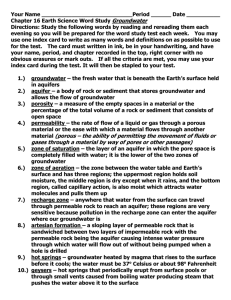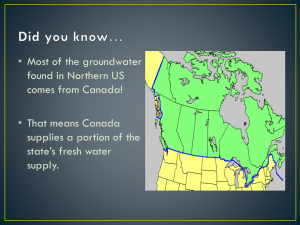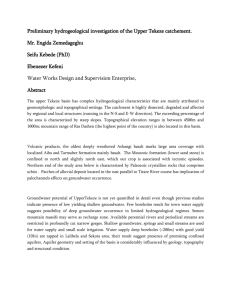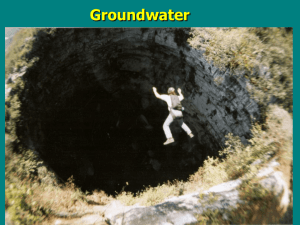GROUNDWATER OCCURRENCE AND DISTRIBUTION IN
advertisement
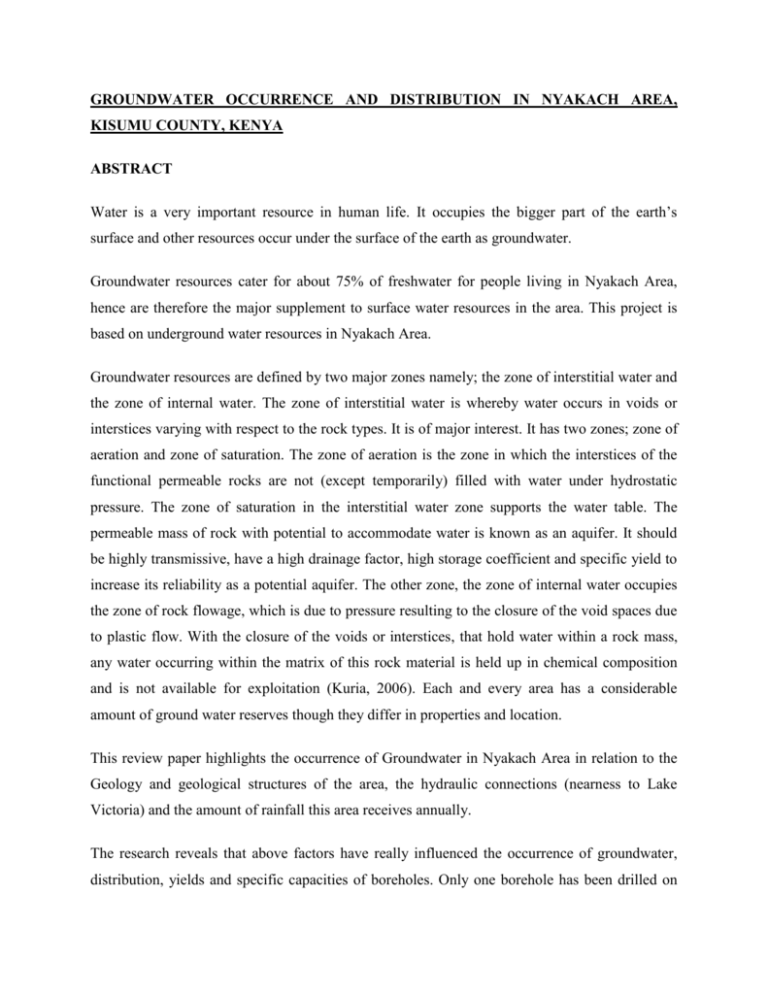
GROUNDWATER OCCURRENCE AND DISTRIBUTION IN NYAKACH AREA, KISUMU COUNTY, KENYA ABSTRACT Water is a very important resource in human life. It occupies the bigger part of the earth’s surface and other resources occur under the surface of the earth as groundwater. Groundwater resources cater for about 75% of freshwater for people living in Nyakach Area, hence are therefore the major supplement to surface water resources in the area. This project is based on underground water resources in Nyakach Area. Groundwater resources are defined by two major zones namely; the zone of interstitial water and the zone of internal water. The zone of interstitial water is whereby water occurs in voids or interstices varying with respect to the rock types. It is of major interest. It has two zones; zone of aeration and zone of saturation. The zone of aeration is the zone in which the interstices of the functional permeable rocks are not (except temporarily) filled with water under hydrostatic pressure. The zone of saturation in the interstitial water zone supports the water table. The permeable mass of rock with potential to accommodate water is known as an aquifer. It should be highly transmissive, have a high drainage factor, high storage coefficient and specific yield to increase its reliability as a potential aquifer. The other zone, the zone of internal water occupies the zone of rock flowage, which is due to pressure resulting to the closure of the void spaces due to plastic flow. With the closure of the voids or interstices, that hold water within a rock mass, any water occurring within the matrix of this rock material is held up in chemical composition and is not available for exploitation (Kuria, 2006). Each and every area has a considerable amount of ground water reserves though they differ in properties and location. This review paper highlights the occurrence of Groundwater in Nyakach Area in relation to the Geology and geological structures of the area, the hydraulic connections (nearness to Lake Victoria) and the amount of rainfall this area receives annually. The research reveals that above factors have really influenced the occurrence of groundwater, distribution, yields and specific capacities of boreholes. Only one borehole has been drilled on the Eastern part of the study area where phonolites overlie granodiorites. The other boreholes on South Western parts of the study area have been found dry. This is mainly attributed to structures in the area as the area mostly comprises of granodiorites .It means, these Granodiorites have neither fractures nor fissures where they were sunk. On the Northern part of the study area, where we have mainly alluvium deposits, the boreholes there are yielding water. The ones that are not are the ones that are closer to the lake. Thus, they could be losing their water to the lake through hydraulic connections. This project report discusses, concludes and recommends on issues that need to be addressed so as to maximize and not over-exploit groundwater in this study area.



